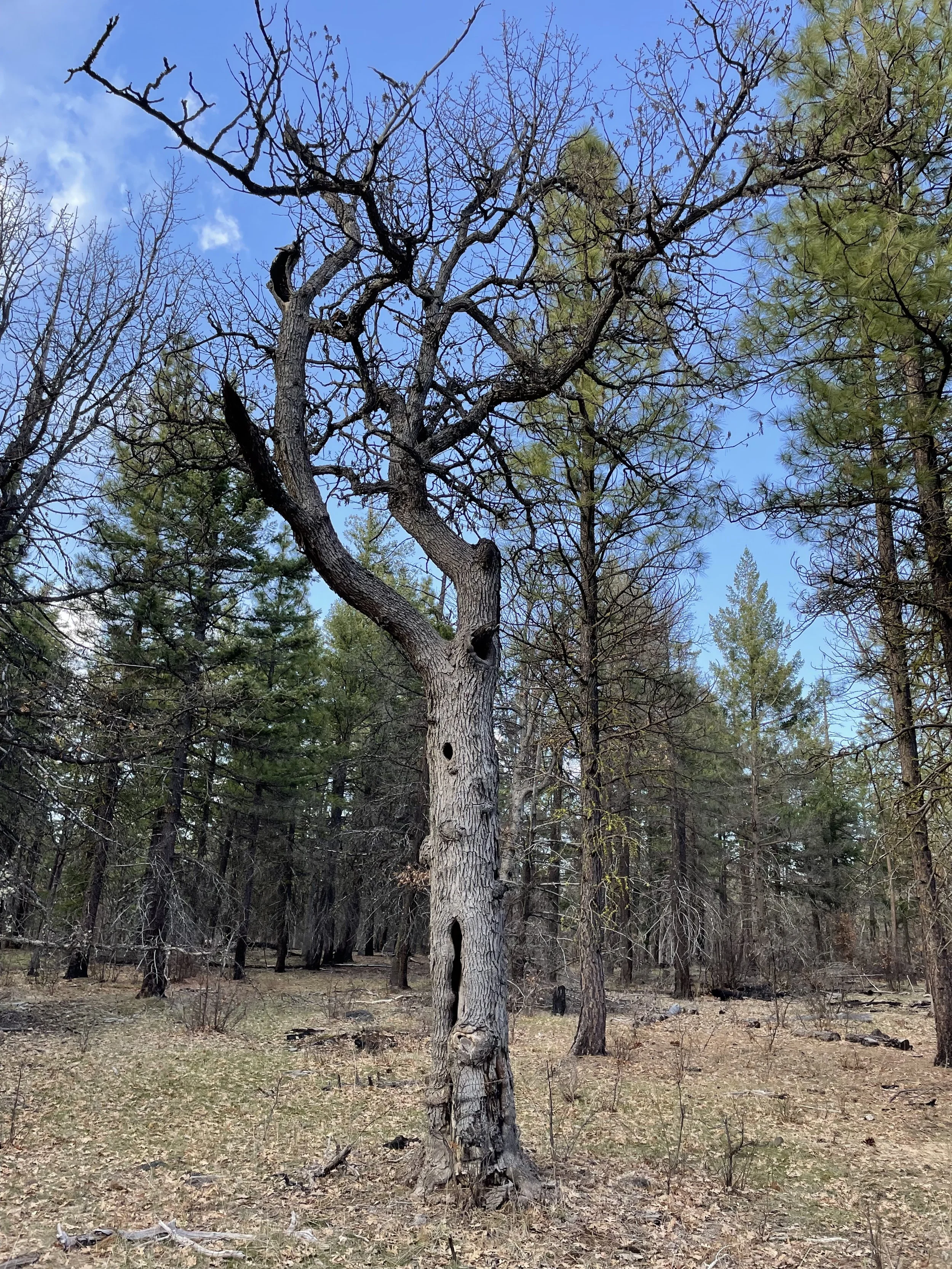Gate Insect and Disease Project
The Gate Insect and Disease Project is focused on keeping forests healthy and reducing the risk of widespread tree die-off in the Mt. Hood National Forest. In recent years, many trees in the area have died due to stress from drought and a Western Pine Beetle outbreak. With hotter, drier summers, this problem is expected to get worse.
One reason tree mortality is increasing is the lack of disturbance in the ecosystem. In the past, regular fires helped thin out trees and keep the ecosystem healthy. But since fires have been suppressed for decades, many areas have become overcrowded. This creates competition for sunlight, water, and nutrients—making trees weaker and more vulnerable to insects and disease. Dense stands also allow pests and disease to spread more easily across the landscape.
To respond to these threats, the Forest Service has identified over 580,000 acres on Mt. Hood National Forest that are especially at risk. The Gate Insect and Disease Project area is within this high-risk zone. The project aims to thin out some of the overcrowded forest and restore more natural conditions—making the forest healthier and more resilient in the face of future drought, insects, and wildfire.
Map of proposed treatments included in the Gate Insect and Disease Project.
To help make the forest healthier and more resilient to insects and disease, the Forest Service will thin overly dense stands of trees across about 2,975 acres in the Gate project area.
The thinning will mostly remove small and medium-sized trees, while leaving the largest and healthiest trees in place. In some places, especially around older ponderosa pines and Oregon white oaks, smaller encroaching conifers will be removed to protect these legacy trees.
Treatment methods will include:
Commercial thinning (removing trees that can be sold)
Non-commercial thinning (removing trees that can’t be sold)
Fuels treatments, like mastication (chopping up brush), pile burning, and prescribed fire.
Thinning will aim to leave about 80 to 160 trees per acre, depending on the site. In some areas, that number could go as low as 40 to allow for more natural diversity.
Environmental protections (called Project Design Criteria) are built into the project to minimize potential effects on water, wildlife, and old-growth habitat. Treatments in riparian areas will maintain a minimum of 40–50% canopy cover to protect water resources.
This project is part of a larger, cross-boundary strategy to restore forest health, slow tree mortality, and prevent future outbreaks of insects and disease. The project was developed in partnership with the Wasco County Forest Collaborative and public comments.
An Oregon white oak tree following thinning and prescribed burning near the Gate Project area. Oregon white oak are tolerant of drought and wildfire, making them suitable for a hotter, drier future. The trees also have unique characteristics such as cavities that create important wildlife habitat.
To learn more about the Gate Insect and Disease Project visit the Mt. Hood National Forest website here.



